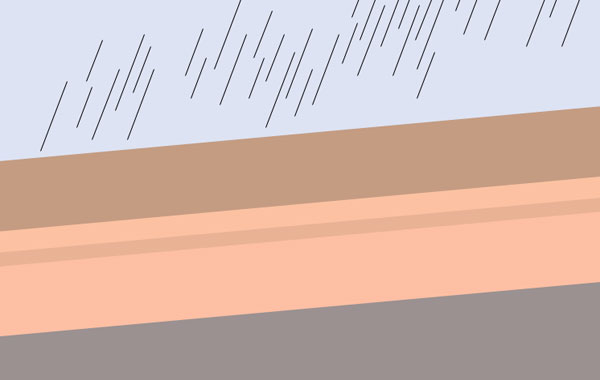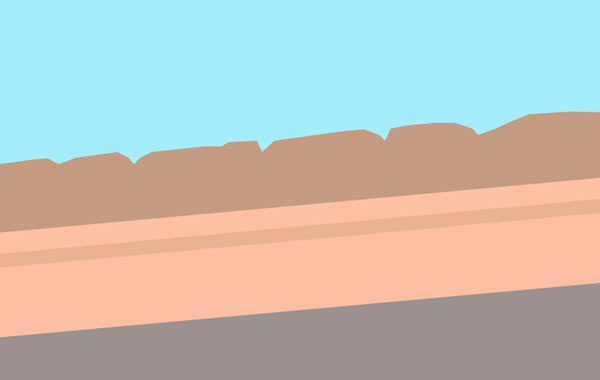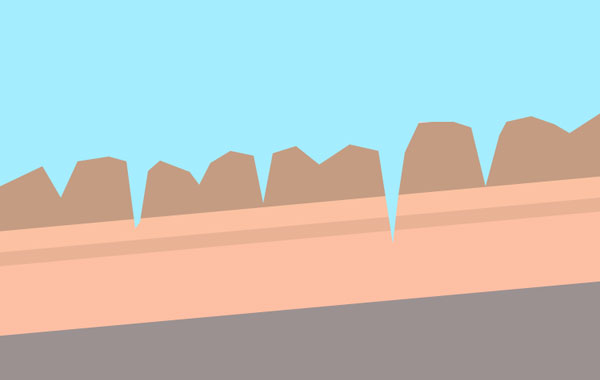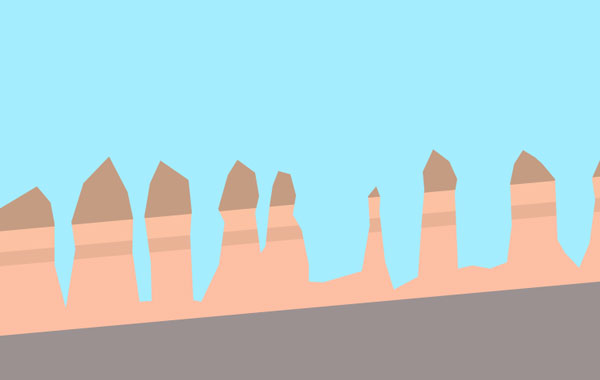Formation of "Fairy Chimneys" at Goreme and Zelve(1) During the late Miocene to lower Pliocene geologic period (11 to 3 Mio. years ago), repeated volcanic eruptions deposited a
sequence of ignimbrite layers. Ignimbrite is a moderately compact volcanic rock, typically of rhyolitic (quartz-rich) composition. It
is composed of numerous small fragments mainly deposited in hot ash falls, often as massive pyroclastic flows. It is not quite clear
which volcano or which volcanoes of Cappadocia erupted the material in the first place. |
 (2) Ignimbrites often get welded into more or less solid rock when hot pyroclastic material falls and particles weld together. The increasing weight of layers may cause enough pressure to further solidify the strata. |  (3) After the formation of the ignimbrite deposits, weathering and erosion sets in. Minor faults or other irregularities in the rock are exploited by surface water, and first channels are cut into the surface. |  (4) Channels deepen, and erosion is facilitated when they reach lower ignimbrite strata which are softer and, thus less erosion resistant (here marked by paler colours) than the harder top layer. |  (5) Today, only parts of the harder layer on the top remain. Like hats, these protect the "fairy chimneys" from rain, while the softer material continues to get eroded and gaps between the "chimneys" widen. |